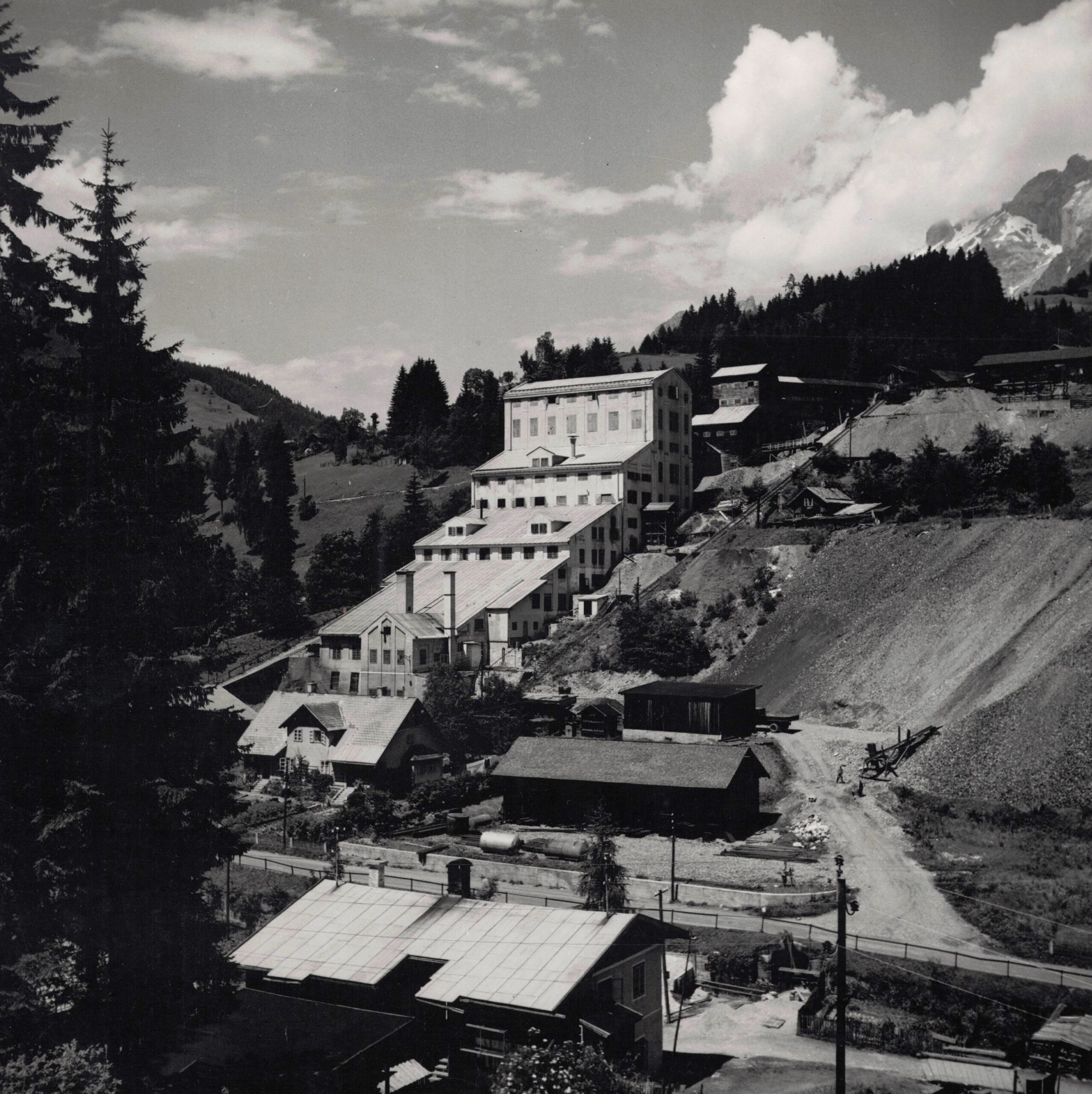Copper Processing
Opposite the site on the opposite slope, where the tennis court is today, once stood the heart of Mühlbach's copper ore processing. Due to the constantly increasing demands on the processing plants at Mitterberg, a new processing plant was built in Mühlbach in 1909. A wooden frame structure. built on concrete pedestals, measuring 60 meters in length and 26.5 meters in width, with multiple floors, was an impressive construction at that time. Here, the ore coming from the mountain was separated from the barren rock, and the pure copper ore was further transported to Mitterberghütten.
On the night of December 7 to 8, 1920 due to a mistake by an employee, a catastrophe occurred, and the entire processing plant was engulfed in flames The building was rebuilt in the following two years in fireproof reinforced concrete with fire compartments at full size. Until its closure in 1977, the ore from the mine was processed into copper concentrate in this building. This was delivered to Brixlegg in Tyrol for copper production. In 1978, after the closure, this building also fell victim to a fire and was
subsequently dismantled.
Kids
Alpine wildlife
The high mountains are home to many animals that have adapted well to the cold and harsh climate. You might see chamois and ibex there, with their strong horns that can climb the rocky cliffs and slopes. Marmots often live in burrows and whistle to warn each other of danger. Eagles and other large birds fly high above the peaks looking for prey. Sometimes snow hares can also be seen hiding from enemies in the snow in winter with their white fur. All these animals are strong and skilful in order to survive in the mountains.
Alpine wildlife
The high mountains are home to a diverse animal world that has adapted to the extreme living conditions. You can observe chamois or ibex, which climb skilfully over steep rocks and impress with their imposing horns. Marmots live in burrows and are known for their loud whistles, which they use to warn each other of enemies in a colony. Eagles and other birds of prey circle majestically over the peaks and hunt small animals. Snow hares with their wintery white fur are masters at camouflaging and hiding from predators. The high mountain fauna (fauna = animal world) is a fascinating world in which animals have developed special skills to survive in this challenging environment.
Alpine fauna
The high mountains are home to an impressive fauna that has adapted perfectly to the extreme living conditions. Chamois and ibex climb steep cliffs and slopes and impress with their strong bodies and imposing horns. Marmots, known for their sociable communities, live in burrows and whistle loudly to warn of danger. Large birds of prey such as the majestic golden eagle soar over the peaks and skilfully hunt prey. Snow hares are true survival artists with their wintery white fur, which protects them from predators. The fauna of the high mountains is a fascinating world and testifies to the animals' ability to adapt to extreme altitudes.



